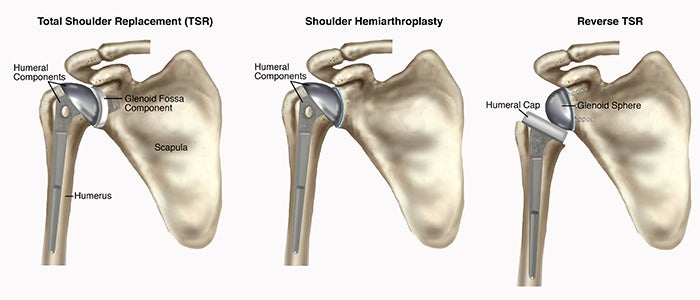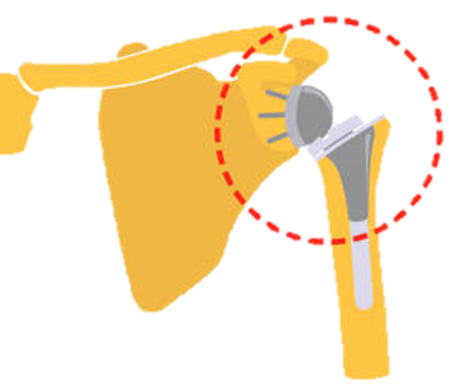Your shoulder is a ball-and-socket joint. The ball at the top of your upper arm moves smoothly in the socket of your shoulder blade on a lining of cartilage. The cartilage prevents your bones from rubbing together. If your cartilage is damaged by injury or arthritis, this can make your joint painful and stiff.
A new shoulder joint can help to improve your shoulder movement and reduce your pain there. Artificial shoulder parts are usually made of metal or plastic or a combination of these.
The average age for people having a shoulder replacement is around 70 years, with many people being well over this age. An artificial shoulder joint will usually last for at least 10 years, often for much longer.
Why have a replacement?
Shoulder replacement surgery is usually recommended for people who have severe pain in their shoulder and have found little or no relief from more conservative treatments.
Some conditions that may require a shoulder replacement include:
- Osteoarthritis. This type of arthritis is common in older people. It occurs when the cartilage that pads bones wears away.
- Rheumatoid arthritis (RA). With RA, your immune system mistakenly attacks your joints, causing pain and inflammation.
- Avascular necrosis. This condition happens when loss of blood to a bone occurs. It can cause damage and pain in the shoulder joint.
- A broken shoulder. If you badly break your shoulder bone, you might need a shoulder replacement to repair it.
The Procedure
There are 3 main types of shoulder replacement. Which on you receive will depend on the condition of the muscles and stability around your shoulder and the strength of your bones.
Reverse shoulder replacement
This is the most commonly used shoulder replacement procedure. A metal ball is attached to your shoulder blade, where your socket was before. And a new socket is attached to the top of your upper arm, where the ball was before.
Total shoulder replacement
A total shoulder replacement is the second most common type. Your surgeon will directly replace the ball and socket with need metal components
Partial shoulder replacement (hemiarthroplasty)
In a partial shoulder replacement, only the ball at the top of your upper arm is replaced. The new metal ball will then move within your existing socket.

Recovery
It usually takes at least three to six months to make a full recovery from a shoulder replacement.
For up to four weeks after the operation, you may need to keep your arm in a sling, especially at night. Your surgeon and physiotherapist will give you specific advice about when to wear your sling.
Within a few weeks after surgery, you should be able to do simple everyday tasks like washing and dressing yourself.
Don’t place your arm in any extreme positions (such as straight out to your side or behind your back) for six weeks after your operation.
Contact Me
Let's chat!
Need more information? Send me an email or drop me a line. I don’t bite!
- Charlotte@rehabontheroad.co.uk
- 07971448719

